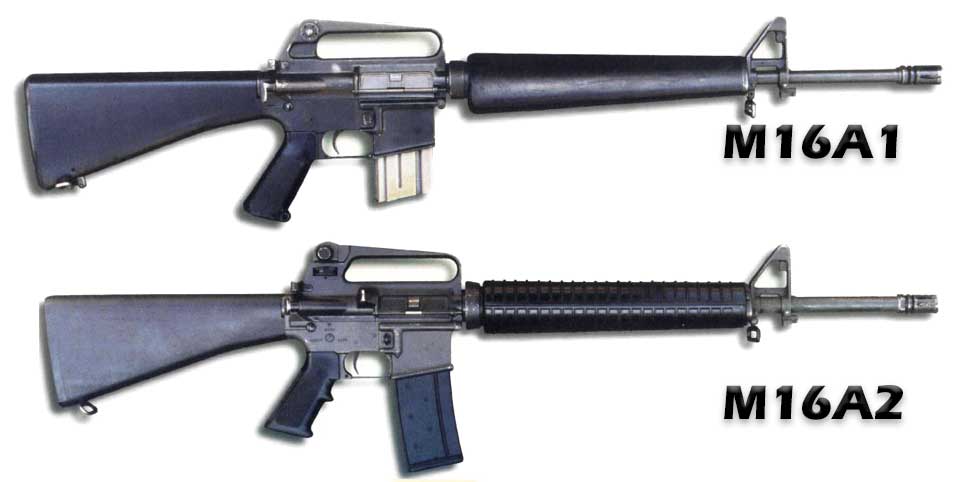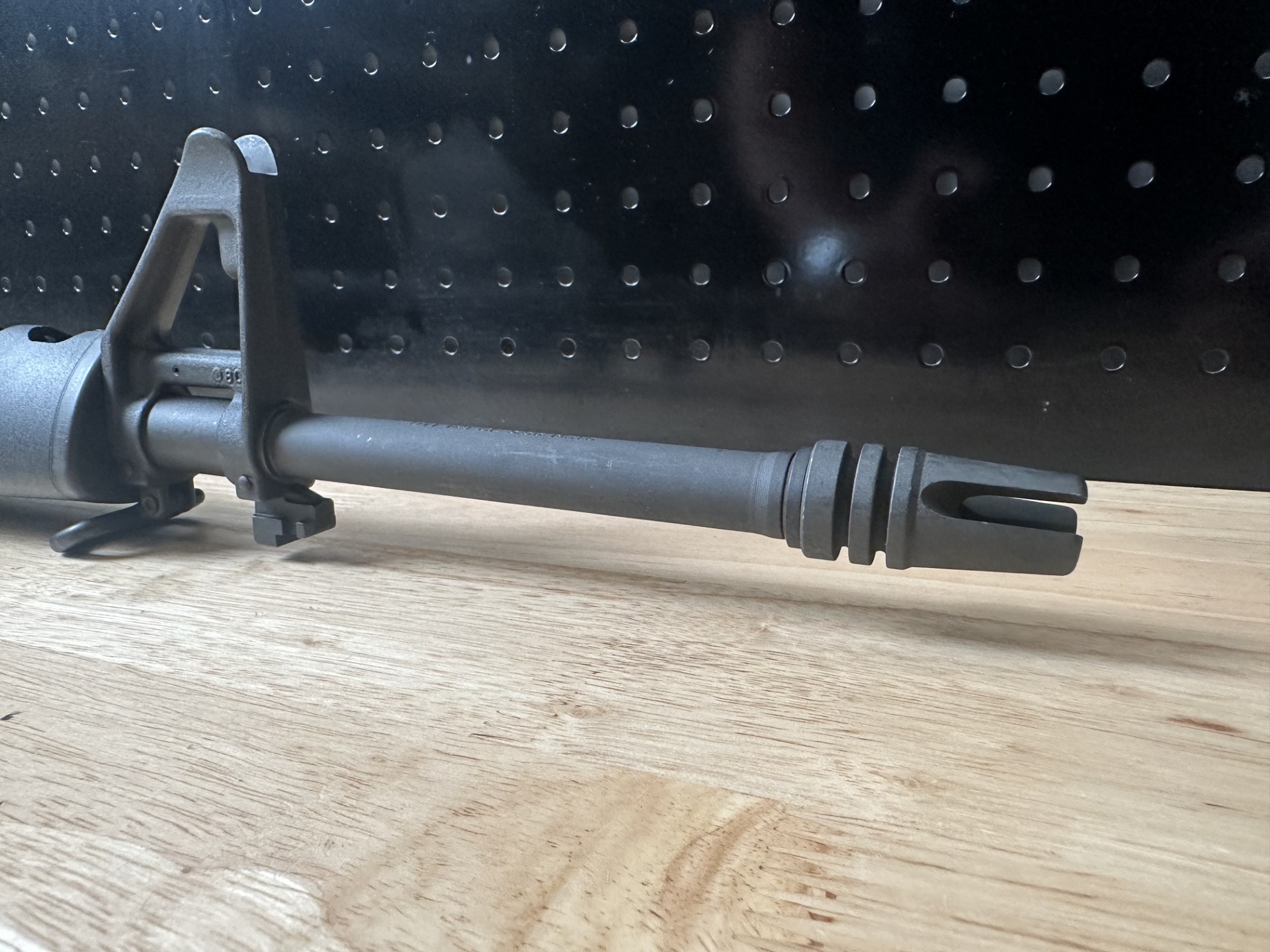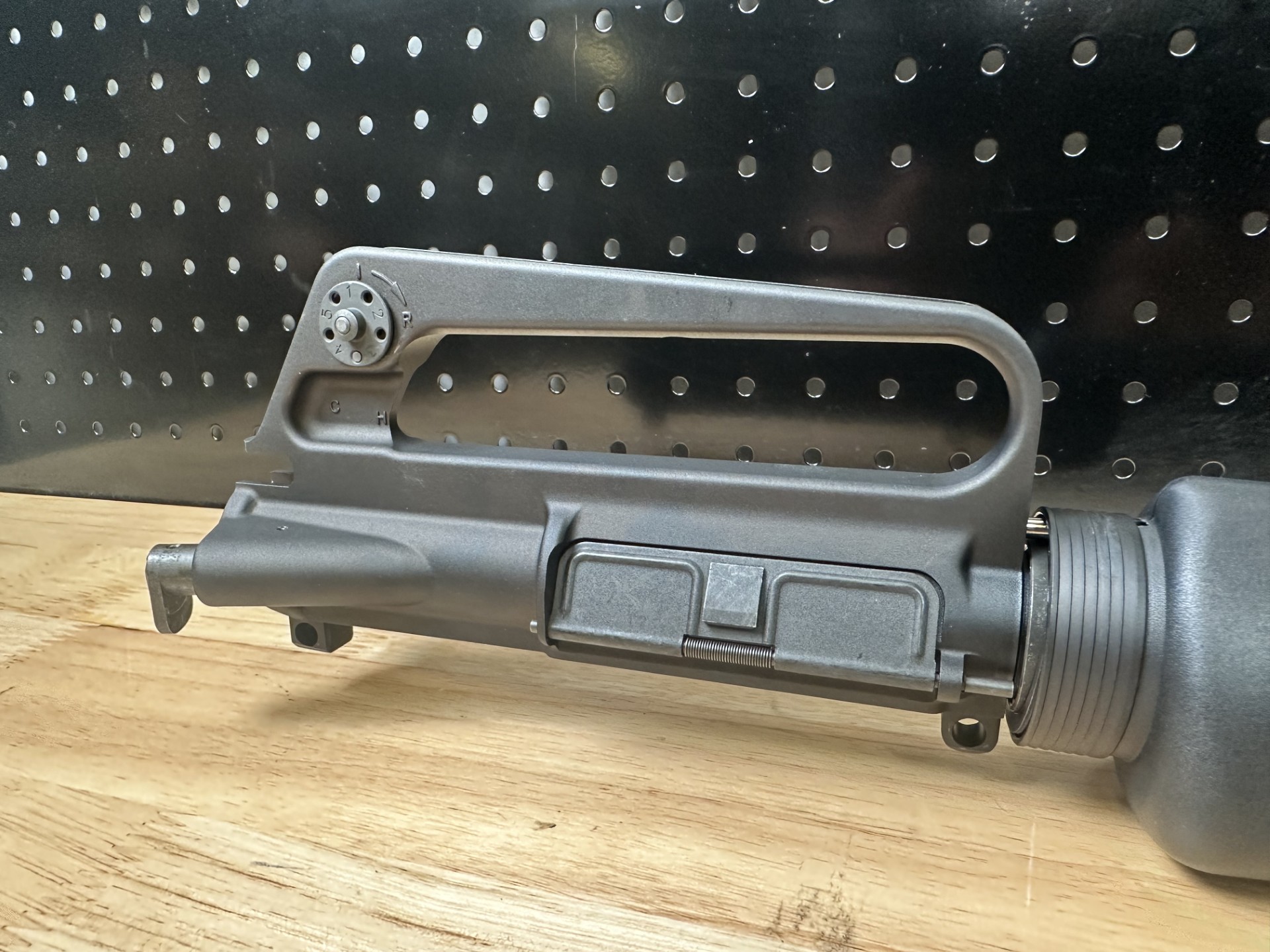M16A1 versus M16A2: A detailed comparison of features and performance
The M16 rifle series has long been a cornerstone of military small arms, with a history that spans several decades and numerous conflicts. Initially introduced in the 1960s, the M16 family of rifles has undergone multiple iterations, each improving upon the last to meet the evolving demands of the battlefield. From the early M16A1, which gained notoriety during the Vietnam War, to the M16A2, which became the standard issue for U.S. forces in the 1980s, these rifles have played a crucial role in modern warfare.
Understanding the differences between the M16A1 and M16A2 is vital for enthusiasts, historians, and military personnel. While similar in appearance, these two models feature distinct modifications that reflect changes in military strategy and technology. In this article, we'll explore the key differences between the M16A1 and M16A2, shedding light on how each rifle was designed to meet the specific needs of its time.
For those eager to dive deeper into the evolution of military firearms, check out our related blog What Brand of AR-15 Does the Military Use? Here, we explore the AR-15's role in military applications and discuss the brands that manufacture these rifles, trusted by armed forces worldwide. These articles provide a comprehensive look at historical and modern military weaponry, offering insights for enthusiasts and professionals alike.
Historical Background
The M16A1 rifle was introduced in the 1960s as a response to the need for a lightweight, high-velocity firearm that could excel in the dense jungles of Vietnam. Developed from the AR-15 design by Eugene Stoner, the M16A1 was officially adopted by the U.S. military in 1964, replacing the heavier M14. Its 5.56x45mm cartridge, capable of rapid fire and effective range, made it a revolutionary weapon in modern warfare. The M16A1's introduction marked a significant shift in military strategy, emphasizing mobility and firepower. However, its early deployments revealed issues with reliability, leading to controversy and eventual improvements that solidified its place in military history.
The M16A2 was developed in the early 1980s as a direct response to the lessons learned from the M16A1's use in Vietnam and subsequent conflicts. The evolution from M16A1 to M16A2 focused on addressing durability, accuracy, and user control. The M16A2 incorporated several upgrades, including a heavier barrel for sustained fire, improved sights for greater precision, and a three-round burst option instead of full-auto to conserve ammunition. The development of the M16A2 was driven by the need for a more versatile and reliable rifle that could meet the diverse challenges of modern combat, reflecting advancements in military technology and strategy.
Design and Features Comparison

The M16A1 and M16A2 share a common lineage, but several fundamental design changes set them apart. Externally, the most noticeable differences are in the stock and handguard. The M16A1 features a slimmer, triangular handguard and a fixed stock made of a lighter material. In contrast, the M16A2 introduced a rounded, more robust handguard designed for better heat dissipation and a longer, sturdier stock made of a more challenging composite material to withstand battlefield rigors. Additionally, the M16A2 has a heavier barrel profile designed to enhance accuracy and reduce barrel flex during sustained fire.
Internally, significant changes were made to the firing mechanisms. The M16A1 was equipped with a full-auto fire mode, allowing continuous fire with a single trigger pull. The M16A2, however, replaced this with a three-round burst mode aimed at conserving ammunition and improving accuracy in controlled bursts. The trigger mechanisms were also refined to provide a more consistent pull. The gas system in the M16A2 was updated to improve reliability and reduce fouling, addressing one of the critical issues experienced with the M16A1.
Regarding sights and optics, the M16A1 has more straightforward iron sights, while the M16A2 introduced an adjustable rear sight for windage and elevation, improving long-range accuracy. The M16A2 also enhanced compatibility with scopes and other optics, making it more adaptable to various combat scenarios.
Performance Differences
The M16A2 was designed with significant improvements in accuracy and range compared to its predecessor, the M16A1. One of the primary upgrades was the introduction of a heavier barrel, which reduced barrel flex during firing and improved overall stability. This, combined with the M16A2's adjustable rear sights, allowed for more precise aiming and greater accuracy, particularly at longer ranges. While the M16A1 was effective at medium range, the M16A2 extended the effective range, offering more reliable performance at distances up to 800 meters, compared to the M16A1's effective range of around 500 meters.
Regarding the rate of fire, the M16A1 featured a full-automatic mode, allowing for continuous fire as long as the trigger was held down. While this mode provided substantial firepower, it often led to wasted ammunition and decreased accuracy during extended bursts. The M16A2 addressed this by replacing the full-auto mode with a three-round burst option. This change aimed to improve operational effectiveness by conserving ammunition and maintaining greater accuracy during engagements. The semi-automatic mode remained a staple in both models, allowing soldiers to fire single, well-aimed shots.
Overall, the M16A2's design focused on enhancing accuracy and control, making it more effective in a broader range of combat scenarios and reducing the need for frequent ammunition resupply.
Technical Specifications
The M16A1 rifle was chambered in 5.56x45mm NATO, a caliber that became standard for many Western militaries. The gun weighed approximately 7.1 pounds (3.2 kg), making it relatively lightweight compared to its predecessors. The M16A1 had an overall length of 39 inches (99 cm) and featured a 20-inch (50.8 cm) barrel. Vital operational features included a 20-round magazine (later upgraded to 30 rounds), a full-automatic fire mode, and a direct impingement gas system, which cycled the action by redirecting gas from the barrel directly onto the bolt carrier. This system contributed to the rifle's high rate of fire, around 700–900 rounds per minute, but also led to issues with fouling and reliability in certain conditions.
The M16A2, while maintaining the same caliber, saw some changes in weight and dimensions due to its design upgrades. It weighed about 8.8 pounds (4 kg) unloaded, reflecting the addition of a heavier barrel and reinforced stock. The overall length remained similar at 39.63 inches (100.7 cm), but the barrel was slightly thicker, improving durability and accuracy. The M16A2 continued to use the direct impingement gas system but introduced the three-round burst mode instead of the full-auto option alongside the semi-automatic mode. The rifle's updated sights and improved handguards were designed for better performance in diverse combat environments.
These technical specifications highlight the evolution of the M16 series. The M16A2 prioritizes durability, accuracy, and controlled fire, responding to the operational needs identified through the M16A1’s service history.
Field Use and Reliability
The M16A1, widely used during the Vietnam War, had a mixed reputation in the field. Its lightweight design and high rate of fire were praised for giving soldiers increased mobility and firepower in the dense jungles of Vietnam. However, the rifle also faced significant reliability issues. While innovative, the direct impingement gas system caused the M16A1 to be prone to fouling, particularly in the humid and dirty environments of Southeast Asia. Additionally, early versions of the rifle were issued without cleaning kits, and there was a misconception that the gun was "self-cleaning," leading to frequent malfunctions such as jamming. Despite these issues, the M16A1's strengths, including its accuracy and ease of use, made it a valuable weapon in many combat situations.
The M16A2 was developed to address the shortcomings of the M16A1 and improve overall field reliability. The enhancements included a heavier barrel, which improved accuracy and reduced the likelihood of overheating during sustained fire. The introduction of the three-round burst mode replaced the full-auto option, helping soldiers conserve ammunition and maintain better control during engagements. The handguard was redesigned to be more durable and heat-resistant, and the mil-spec stock was reinforced to withstand harsher conditions.
User feedback from soldiers who transitioned to the M16A2 was generally positive, with many noting the rifle's increased reliability and improved performance in various combat environments. The upgrades made the M16A2 a more dependable weapon, addressing many of the issues that had plagued the M16A1 and solidifying its place as a staple of military arsenals for years to come.
Impact on Military Operations
The M16A1 made its mark in military history primarily during the Vietnam War, becoming the standard issue rifle for U.S. forces. Its introduction brought a significant shift in combat dynamics, offering a lightweight, high-rate-of-fire weapon well-suited to Vietnam's guerilla warfare and dense jungle environments. Despite its initial reliability issues, the M16A1's performance in combat was notable for its firepower and accuracy, which provided a crucial advantage in close-quarters combat and rapid engagements. The rifle's influence extended beyond Vietnam, as it became widely used in various conflicts during the Cold War era, cementing its role in modern military operations.

The M16A2 was introduced in the early 1980s, reflecting lessons learned from the M16A1's use in Vietnam and other conflicts. Various military units, including the U.S. Marine Corps, quickly adopted it, which played a significant role in its development. The M16A2's enhancements, particularly in reliability and accuracy, made it a preferred choice for soldiers in various combat scenarios, from desert operations in the Gulf War to peacekeeping missions. Feedback from military units was overwhelmingly positive, with soldiers appreciating the rifle's improved durability, user-friendly features, and adaptability to different combat environments.
The adoption of the M16A2 across various branches of the military had a significant impact on operations, enabling more effective engagement at longer ranges and improving overall combat effectiveness. Its success paved the way for further developments in the M16 series, influencing the design of subsequent rifles and solidifying its legacy in military history.
Conclusion
In conclusion, the evolution from the M16A1 to the M16A2 marks a significant advancement in military rifle technology, reflecting the lessons learned from past conflicts and the demands of modern warfare. The key differences between the two models—from external design changes like the stock and handguard to internal improvements in firing mechanisms and gas systems—demonstrate a clear focus on enhancing reliability, accuracy, and user control. The M16A1, while revolutionary in its time, faced challenges in the field that were addressed with the comprehensive upgrades found in the M16A2.
The impact of the M16A2’s upgrades was profound. It offered soldiers a more dependable and accurate weapon, better suited to various combat scenarios, from intense firefights to long-range engagements. The feedback from military units underscored the success of these enhancements, leading to the widespread adoption of the M16A2 and influencing the design of future rifles.
Today, while newer models like the M16A4 and the M4 carbine have taken center stage, the M16A2 remains a testament to the importance of continuous improvement in military technology. Its legacy lives on, not just in the rifles that followed but in the lessons it taught about the need for adaptability and innovation in the face of evolving combat challenges.
Recent Posts
-
Best AR-15 Handguards - MOE SL Handguard
In the world of AR-15 customization, handguards not only protect the barrel but are pivotal in enhan …Feb 5th 2025 -
Budget vs. Premium AR-15 Rifle Scopes: Are Expensive Optics Worth It?
When it comes to enhancing your AR-15's performance, selecting the right AR-15 rifle scope is crucia …Feb 2nd 2025 -
Top Lightweight Red Dot Sights for Minimalist AR-15 Builds
Choosing the right red dot sight for your AR-15 is more than just picking a well-known brand—i …Jan 30th 2025






